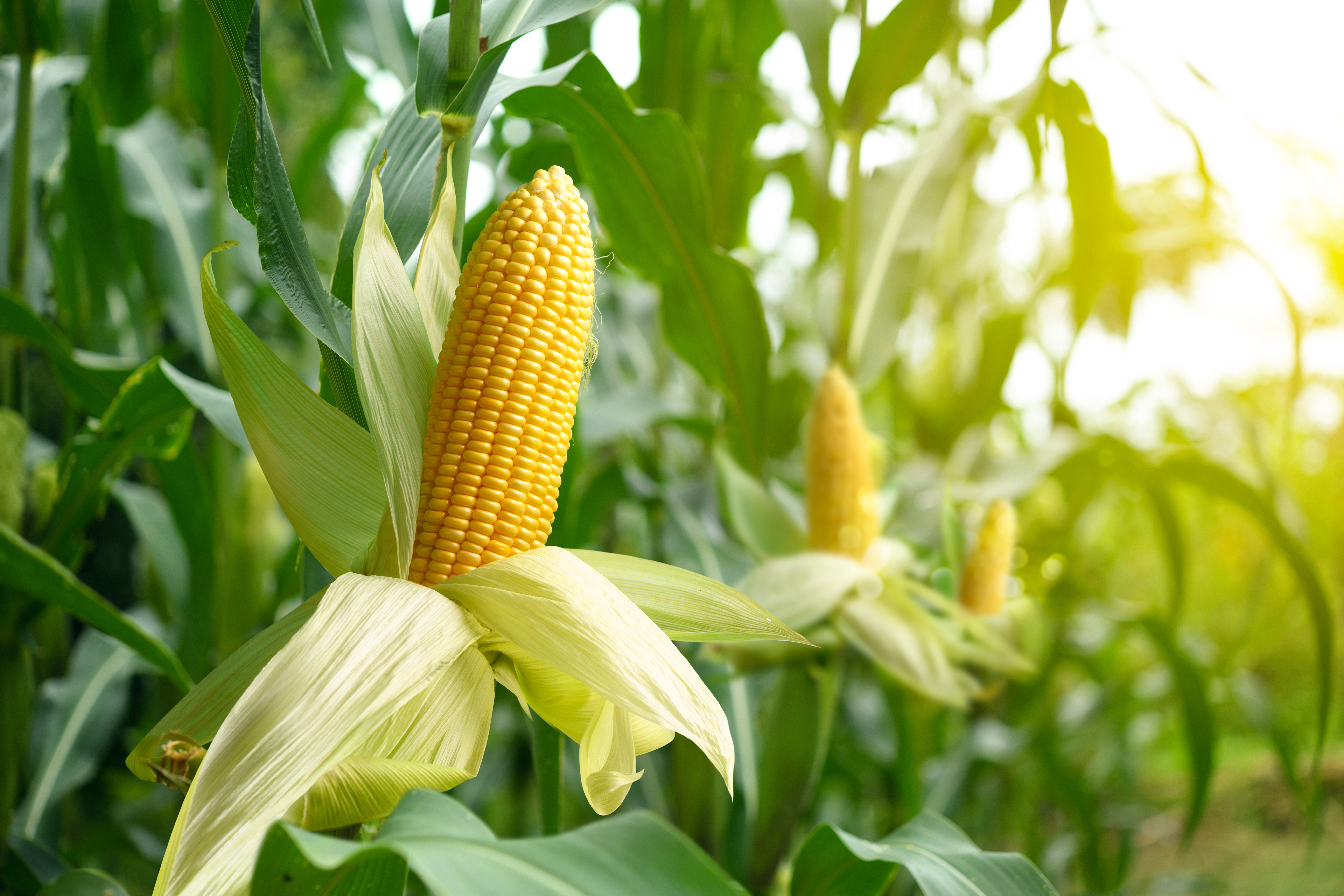
Maize reliance on the zinc micronutrient
Dr Terry Mabbett in conversation with OMEX Agrifluids’ managing director, Peter Prentis provides insight into commercially used zinc nutrient products for foliar application as well as other novel treatments for maize.
MAIZE IS A big cereal crop in every respect and the most widely grown. Maize crops are cultivated in temperate and tropical climates and yield a greater weight of grain per unit area. More than 150 million hectares are currently down to maize production. For 2022/2023 period, maize grain production was 1.15 billion metric tonnes, with wheat and rice the closest on 783.80 million and 503.00 million metric tonnes, respectively. In biomass too, mature maize dwarfs all other cereal crops.
Maize requires a full and balanced complement of essential plant nutrients, but as frequently happens, some nutrients appear to be more ‘essential’ than others. The one nutrient that can ‘make or break’ a maize crop is zinc, although as a micronutrient, it is only required in trace amounts. Maize is highly responsive to zinc.
Maize is a critical staple food for several hundred million people in Asia, Africa and Latin America and the most important cereal feed for livestock. It is the main source of calories and minerals for rural populations in a number of developing countries, but has poor concentrations of protein and micronutrients, especially zinc. Where maize consumption is very high, the incidence of micronutrient malnutrition is correspondingly high, especially for zinc, thus resulting in human zinc deficiency.
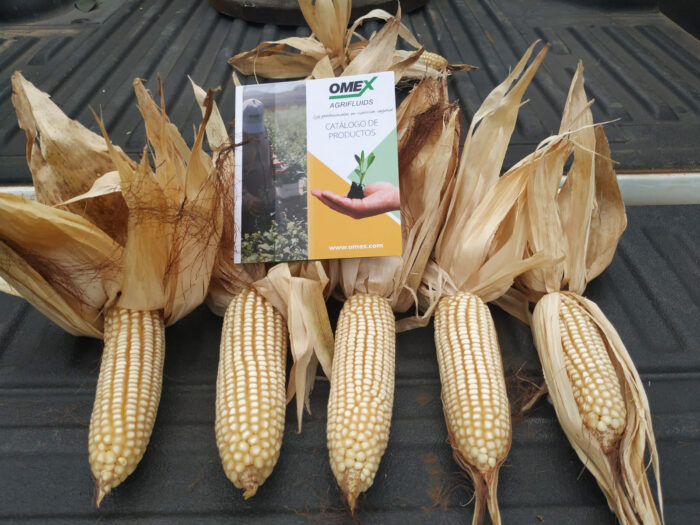
OMEX Kingfol Zn applied as seed priming and foliar spray treatments achieves zinc enrichment of the grain
The enrichment of maize with high levels of zinc is a growing global challenge to ensure the health and well-being of human populations who rely on maize for their nourishment. The first step in zinc enrichment is through fertilisation of the growing crop. Although maize has a huge grain yield capacity on a given area, its yield can be significantly reduced by adverse soil and climatic conditions, such as drought stress and mineral nutrient deficiencies in the soil.
Like durum wheat and rice, maize is also highly susceptible to soil zinc deficiency. Zinc is crucially important for proper maize plant growth and development, especially in the early part of the growing season to realise full yield potential and bring forward the harvest date.
A wide range of fertiliser trials have demonstrated the benefits of zinc and drilling down into the data, it is easy to see why. Pollen viability at the tasselling stage is increased with correspondingly more and heavier kernels located in the apical portion of the ear where inferior grain is typically found. Malaysian studies have shown how treatment with zinc increased diameter, length and kernel row of the maize ear. Zinc plays a significant role in basic plant metabolism and enhances growth, yield and quality of the maize grain by stimulating chlorophyll production, photosynthetic activity, nutrient uptake and protein biosynthesis.
However, zinc deficiency is a common occurrence in maize. Deficiency symptoms include the appearance of pale yellow coloured chlorotic zones of leaf tissue running parallel to the midrib and beginning at the base of the maize leaf, while the margins, tip and midrib stay green. The youngest unfolding leaves at the apex of the plant can be completely chlorotic yellow or even white, the latter condition known as ‘white bud’. When zinc deficiency is acute and severe, leaves at the base of the plant may develop a reddish brown necrotic discolouration, a condition that may also appear on the basal part of the stem. Internode growth is interrupted with plants having a stunted appearance.
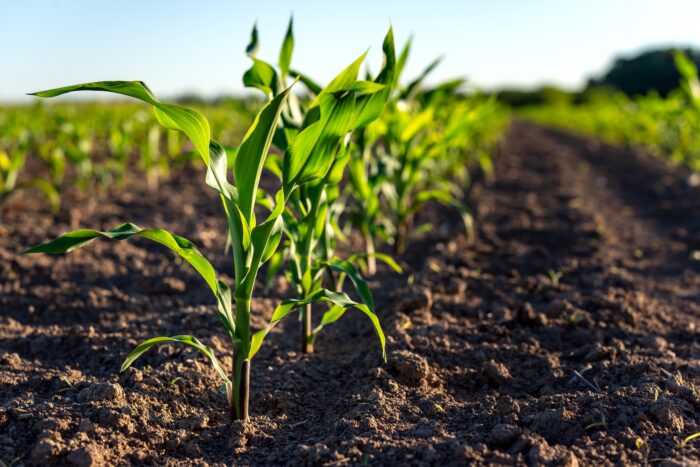 First step to zinc enrichment of maize grain is through fertilisation of the growing crop, but as touched on before, there are many constraints on zinc moving from the soil and into the roots of the maize plant. Soils may be inherently deficient in zinc or deficient in plant available zinc because the micronutrient is locked up due to specific soil or climatic conditions. Zinc deficiency is aggravated in soils which contain high organic matter, have a high pH (alkaline) and those rich in phosphorous.
First step to zinc enrichment of maize grain is through fertilisation of the growing crop, but as touched on before, there are many constraints on zinc moving from the soil and into the roots of the maize plant. Soils may be inherently deficient in zinc or deficient in plant available zinc because the micronutrient is locked up due to specific soil or climatic conditions. Zinc deficiency is aggravated in soils which contain high organic matter, have a high pH (alkaline) and those rich in phosphorous.
Climatic effects are important too, with soil zinc availability inhibited by cold, wet conditions and also drought. Clearly there has to be another way to get zinc into the maize plant and that avenue is through the leaves using soluble zinc applied as a foliar spray.
Extensive trials on foliar feeding are ongoing around the world with one such set in Poland proving particularly interesting. Maize responded significantly to foliar feeding. The optimal rate of zinc for achieving significant grain yield response was in the range of 1.0 to 1.5 kg Zn/ha. Grain yield increase was around 18% as compared to the treatment which was fertilised only with NPK. Plants fertilised with 1.0 kg Zn/ha showed significant increases in total N uptake and grain yield. Increases in cob (ear) length and higher numbers of kernels per plant were among the plant ‘structures’ contributing to increased yield.
Maize may well be highly sensitive to shortfalls in zinc but some enterprising research programmes have shown a relationship with other micronutrients. For instance, foliar application of zinc not only increased zinc concentration and bioavailability in maize but also improved the concentration and bioavailability of Fe (iron) to some extent. Other research has focussed on treatment with zinc and boron to see if there is evidence of a relationship between these two micronutrients in the growth and development of the maize plant.
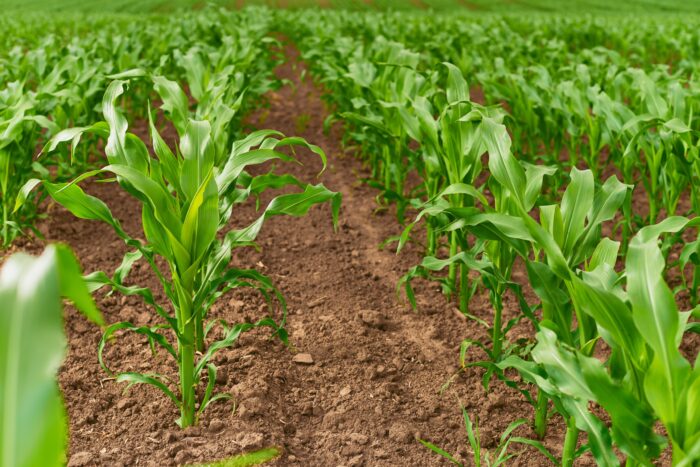
Kingfol Zn as a seed priming treatment is important because zinc stimulates rooting and is therefore particularly beneficial in the early stages of the crop
Zinc goes foliar with OMEX Agrifluids
So much for the theory, but I wanted to learn about zinc nutrient products in commercial use for foliar application and other novel treatments such as seed treatments for maize. To find out more, I spoke with Peter Prentis at OMEX Agrifluids a world-leading, R&D based company in the UK, with headquarters and manufacturing facilities at Kings Lynn in the East Anglian region of England. Peter Prentis is the managing director with remit and responsibility for research, development and marketing throughout Asia.
I asked Peter Prentis about the well-tried and tested OMEX Kingfol range of single element formulations for specific nutrient deficiencies, with Kingfol Zn being at the top of the list. “Our Kingfol foliar nutrients have been formulated using only the highest quality mineral elements,” said Prentis. “They are marketed as highly concentrated liquid formulations to minimise handling, packaging and transport costs as well as application rates. They disperse easily with no requirement for pre-mixing and are ideal for correcting specific mineral deficiencies. Concentration of Kingfol Zn is 70% Zn w/v (weight to volume)”.
I asked whether there were any special features in the way of adjuvants. “Yes”, said Prentis, “they are formulated with uptake enhancers to optimise their performance over time. Inclusion of these unique enhancers in the formulation allows the entry of the zinc mineral nutrient via two main pathways, one rapid and one more slowly, thus providing a mechanism for sustained uptake over time.
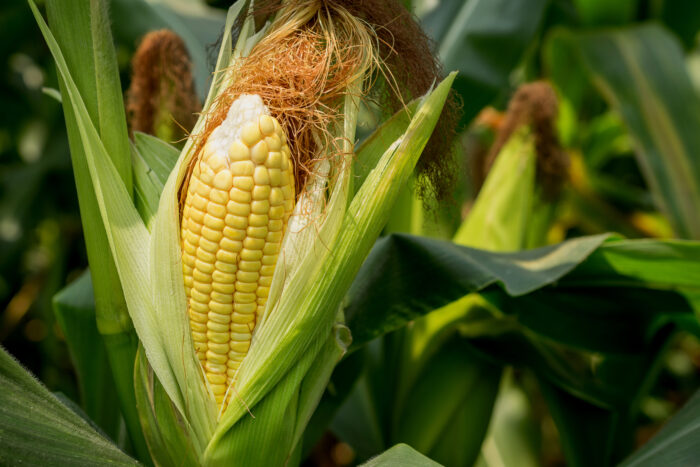
Well-timed treatments with OMEX Kingfol Zn are rewarded with zinc enriched grain
“The rapid uptake takes place via the stomata which are distributed over the surface of the maize leaf. This avenue of entry is enhanced further by ensuring good spray coverage which is materially enhanced by addition of a high quality wetter such as OMEX SW7 to the spray mix. This achieves so called ‘stomatal flooding’ to facilitate maximum absorption of the zinc containing spray liquid.
“The slower, sustained uptake is furnished by the uptake enhancers contained in the Kingfol Zn product formulation. They stimulate the microbes which occur and live naturally on the surface of the leaf and which are sometimes called epiphyllic microorganisms. Now in ionic form, due to the solubilising activities of these naturally occurring microbes, soluble zinc cations pass into the leaf by diffusion through minute aqueous pores in the leaf cuticle.”
Next on the agenda was mode of application and application rate. “Main mode of application for Kingfol Zn is by foliar spraying at any time during growth and development of the maize crop, by applying at a rate of 0.5 – 1.0 l of product/ha, and of course at any time a zinc deficiency is indicated by appearance of the classic zinc deficiency symptoms in maize,” Prentis told Far Eastern Agriculture. “Is there any other accepted mode of application?” I asked. “Yes, Kingfol Zn can be applied as a seed primer treatment and particularly pertinent. That is because treatment with zinc often stimulates rooting and is therefore particularly beneficial in the early stages of the crop,” said Prentis.
Finally I was interested to know whether there had been any investigation into using Kingfol Zinc as a seed primer treatment and in tandem with foliar sprays of Kingfol Zn or any other OMEX product. Prentis referred to some interesting trials featuring Kingfol Zn as a seed priming treatment for maize seed grain and followed up with foliar applications of OMEX CalMax Gold (24% w/v calcium) and OMEX Foliar Boron (15% w/v boron).
Best treatment for grain yield was Kingfol Zn (15ml/kg seed) as a seed priming treatment followed by foliar sprays of OMEX CalMax Gold (3ml/l at the V6 – sixth leaf collar stage) and OMEX Foliar Boron (1.5ml/l) at the VT stage which is 9-10 weeks after seedling emergence, in that order.

